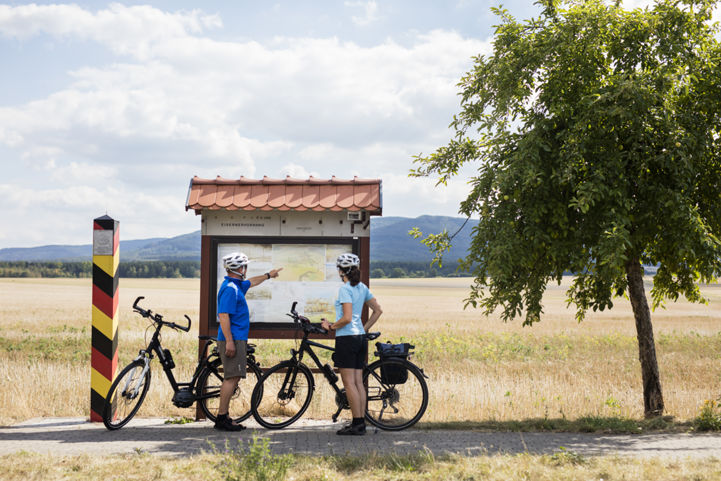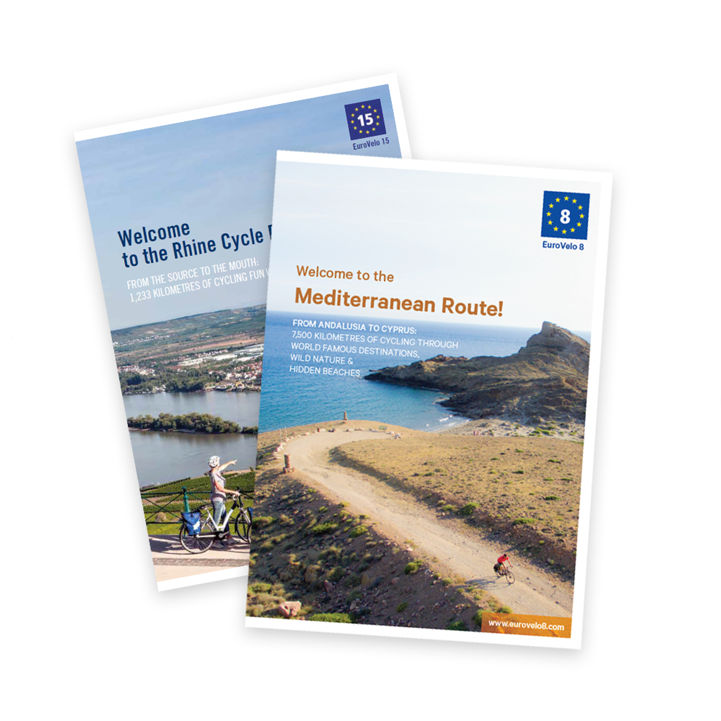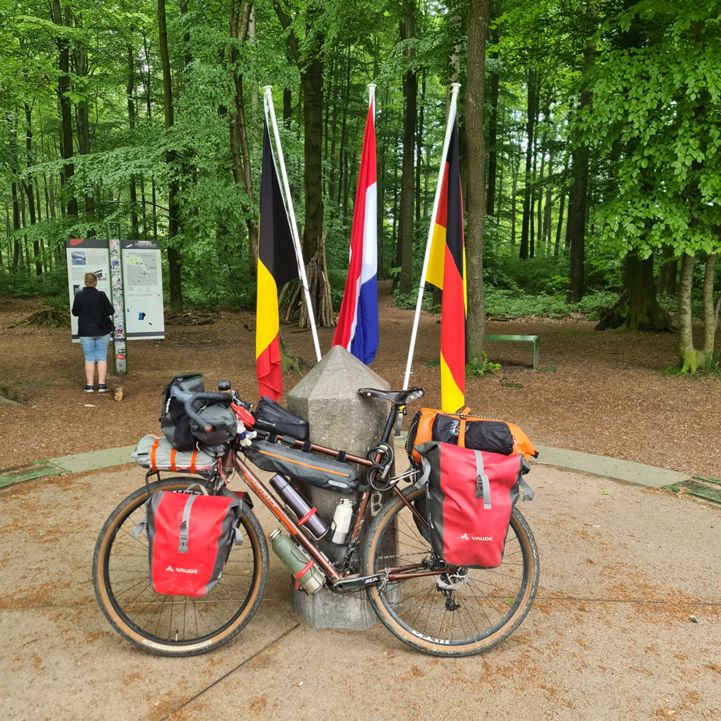Five tips to plan your cycling trip
In this article, you will find insightful tips to help you plan your trip on EuroVelo. You can also choose to book an organised tour, guided or self-guided, through our Bookable offers search engine.
==1. Plan your daily stages
First, plan daily sections according to you, the time you want to cycle and your physical abilities. The average cyclist will do around 50-60 km per day with an average speed of 15km/h without breaks. If you are travelling with children, counting 30 or 40 km per day is better. However, a cyclist with a comfortable bicycle, good physical condition and some experience will be able to cover around 100km each day at a speed of 20km/h.
These numbers are just an indication, and other factors are at play. The numbers given above are considered for a flat route; moderate elevation and the weather conditions are important factors to keep in mind. The wind, especially along the seaside or rivers, can also have a considerable impact (good or bad!).
You should also plan your daily sections according to where you can find accommodation and other services.
Finally, planning your daily stages is not only about what you can do but also about what you want to do. Shorter daily stages can be the occasion to visit a city or take a longer break at a scenic spot, or simply enjoy your time on EuroVelo.

==2. Use available resources and advice from others
The general advice above can help you, but you will probably need more detailed information to plan your route.
A lot of resources are already available on EuroVelo.com:
- Find your way: GPX tracks for each route.
- Find your services: in most countries, National cycling labels indicate cycling-friendly services.
- Use a guidebook: Different transnational, national or regional guides and maps. You can also receive the EuroVelo 8 handbook (in English) or the EuroVelo 15 handbook (in English, French, German, and Dutch), if you decide to donate to support the development of EuroVelo.

- Check frequently asked questions: the EuroVelo FAQ (information on route categories, best EuroVelo routes for families with kids and beginners).
- Ask for feedback from other cyclists: Benefit from the experience of other cyclists by posting a message on the EuroVelo Discussion Group on Facebook. Many cyclists have already cycled EuroVelo routes and will surely have an answer to whatever question you may have, from the state of the infrastructure to the shipping of your bicycle abroad.
- Check national websites for detailed information, and if you cannot find the answers you are looking for, contact National EuroVelo Coordination Centres. Pro Velo in Belgium, France Vélo Tourisme in France and ADFC in Germany have extensive tips to plan a cycling trip. Feel free to browse EuroVelo.com for other national websites.
==3. Do some home testing
Advice and resources are nice and useful, but knowing yourself, your physical and psychological limits, your bicycle, and the rest of your equipment are essential. To this end, nothing is better than doing home testing!
You can leave for a weekend (or even a day and pitch your tent in your garden) to have a better idea of the number of kilometres you can cycle and the maximum weight you can carry. It is also the occasion to test your equipment.
==4. Choose the right equipment
And it starts with the bicycle.
Touring/trekking bikes are specially made for long travel: they are solid, can take on a huge load, and are adapted to most terrains.
Gravel bikes can also be an option: they are lighter and more efficient on rough terrains but less robust, and you cannot put as much weight on them as on a touring bicycle.

E-bikes are more and more popular and can help those who lack physical condition and need help for elevation.
Road bikes are usually not the best since a long-distance itinerary will likely contain unpaved sections.
Nowadays, there are a lot of different bikes, so the best thing is to better define your needs, discuss it with others or go to your favourite bike shop, explain your project and ask for advice. Another option is to rent a bike from a professional. It is even possible sometimes to rent a bike with a one-way service, picking it up at your starting point and giving it back at your arrival (read our article about one-way bike rental).
Clothes and sleeping gear must be chosen carefully considering your destination, especially if you travel to countries with extreme weather conditions. No matter where you are going, it is essential to take waterproof equipment since it would be unusual to have no rain or no humidity at all over a long-distance cycling trip. It is also important to think about how to protect yourself from the sun and be prepared to carry water with you.
==5. Think of combining cycling and public transport
If you are not planning to start your trip from your home and do a round trip, taking the public transport to get to your starting point and/or come back can be the ideal solution to keep your carbon footprint low and enjoy beautiful landscapes.
Public transport can also be useful for skipping an underdeveloped or difficult section. It can also be the occasion to take a little break from the saddle and enjoy a different perspective.

But let’s face it: taking a bike in a train is often the most difficult part of a cycling trip. Since every train company has its own conditions, it is better to check the dedicated websites. This information is available for each country crossed by EuroVelo 6 – Atlantic - Black Sea and EuroVelo 19 - Meuse Cycle Route on EuroVelo.com. If you are cycling on EuroVelo 15, read our article about combining cycling and public transport along the Rhine.
Taking bikes on long-distance coaches or ferries can also be an option. This question can also be asked in the EuroVelo Discussion Group. EuroVelo.com provides information about public transport when available. And ECF published a report in 2021 about conditions for cyclists in long-distance trains “Cyclists love trains”.
Now, you are ready to hop on your bicycle and discover the whole EuroVelo network!